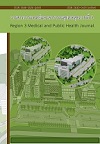สาเหตุและผลการรักษาของภาวะชักต่อเนื่องในเด็กในโรงพยาบาลสวรรค์ประชารักษ์
คำสำคัญ:
ภาวะชักต่อเนื่อง, เด็ก, สาเหตุ, ผลการรักษาบทคัดย่อ
วัตถุประสงค์ : เพื่อศึกษาสาเหตุและผลการรักษาผู้ป่วยเด็กที่มีภาวะชักต่อเนื่อง และศึกษาปัจจัยที่ทำให้เกิดผลการรักษาไม่ดี
วิธีการศึกษา : ศึกษาเชิงสังเกตชนิดวิเคราะห์ย้อนหลังในผู้ป่วยอายุ 1 เดือนถึง 15 ปีทั้งหมด ที่ได้รับการวินิจฉัยว่ามีภาวะชักต่อเนื่อง และได้รับการรักษาเป็นผู้ป่วยในของโรงพยาบาลสวรรค์ประชารักษ์ ระหว่างวันที่ 1 สิงหาคม 2554 ถึง 1 สิงหาคม 2564 จำนวน 122 คน เก็บข้อมูลจากเวชระเบียน แบ่งผู้ป่วยตามผลการรักษาเป็น 2 กลุ่มคือ กลุ่มผลการรักษาดี และกลุ่มผลการรักษาไม่ดีหรือเสียชีวิต และวิเคราะห์ปัจจัยที่มีผลต่อการรักษาไม่ดีด้วยสถิติ logistic regression กำหนดระดับนัยสำคัญทางสถิติที่ p-value น้อยกว่า 0.05
ผลการศึกษา : ผู้ป่วยเป็นเพศชาย ร้อยละ 54.1 ค่ามัธยฐานอายุ 3.2 ปี (IQR 1.1-6.3 ปี) แบ่งเป็นกลุ่มที่ผลการรักษาดี 91 คน คิดเป็นร้อยละ 74.6 และกลุ่มผลการรักษาไม่ดี 31 คน คิดเป็นร้อยละ 25.4 โดยในกลุ่มนี้มีผู้เสียชีวิต 11 คน คิดป็นร้อยละ 9.0 พบสาเหตุการชักจาก acute symptomatic, remote symptomatic, cryptogenic และ progressive ร้อยละ 68.9, 16.4, 10.7 และ 4.1 ตามลำดับ ปัจจัยที่ทำให้เกิดผลการรักษาไม่ดี ได้แก่ เพศชาย (aOR, 4.49; 95%CI, 1.41-14.28; p=0.01) พัฒนาการช้า (aOR, 16.57; 95%CI, 4.12-66.74; p<0.01) ระยะเวลาที่ชักมากกว่า 5 ชั่วโมง (aOR, 6.58; 95%CI, 1.45-29.76; p=0.01) และจำนวนยากันชักที่ใช้มากกว่าหรือเท่ากับ 4 ชนิด (aOR, 10.24; 95%CI, 1.8-58.15; p=0.01)
สรุป : ภาวะชักต่อเนื่องมีผลต่อการเสียชีวิตและทุพพลภาพ สาเหตุที่พบมากสุดจาก acute symptomatic ผู้ป่วยที่มีพัฒนาการช้าหรือมีโรคลมชักเป็นกลุ่มเสี่ยงที่ควรให้การดูแลอย่างใกล้ชิด การเพิ่มประสิทธิภาพในการรักษาภาวะชักต่อเนื่องเพื่อให้หยุดชักเร็วที่สุดเป็นปัจจัยสำคัญที่ช่วยลดการเสียชีวิตหรือทุพพลภาพได้
คำสำคัญ : ภาวะชักต่อเนื่อง เด็ก สาเหตุ ผลการรักษา
เอกสารอ้างอิง
Trinka E, Cock H, Hesdorffer D, Rossetti AO, Scheffer IE, Shinnar S, et al. A definition and classification of status epilepticus--report of the ILAE Task Force on classification of status epilepticus. Epilepsia. 2015;56(10):1515-23.
Alyoubi RA, Aljaafari DT, Basheikh MA, Al-Yahyawi NY, Bakry MA, BenHli NM, et al. The etiology and risk factors of convulsive status epilepticus in pediatric patients of tertiary center in Saudi Arabia. Neurosciences (Riyadh). 2021;26(1):26-30.
Halawa EF, Draz I, Ahmed D, Shaheen HA. Predictors of outcome of convulsive status epilepticus among an Egyptian Pediatric Tertiary Hospital. J Child Neurol. 2015;30(13):1736-42.
Cavusoglu D, Sinmaz EE, Dundar NO, Can FK, Anil AB, Sarioglu B. Treatment outcomes of pediatric status epilepticus in a tertiary pediatric intensive care unit. Pediatr Emerg Care. 2021;37(7):360-4.
Zimmern V, Korff C. Status epilepticus in children. J Clin Neurophysiol. 2020;37(5):429-33.
Visudtibhan A, Limhirun J, Chiemchanya S, Visudhiphan P. Convulsive status epilepticus in Thai children at Ramathibodi Hospital. J Med Assoc Thai. 2006;89(6):803-8.
Madhu PK, Krithika R. Convulsive status epilepticus in children: clinical profile and outcome in a tertiary care hospital. International Journal of Contemporary Pediatrics. 2019;6(2):280-7.
Vafee-Shahi M, Soltanieh E, Saidi H, Riahi A. Etiology, risk factors, mortality and morbidity of status epilepticus children: a retrospective cross-sectional study in Tehran, Iran. Open Neurol J. 2020;14:95-102.
Gurcharran K, Grinspan ZM. The burden of pediatric status epilepticus: Epidemiology, morbidity, mortality, and costs. Seizure. 2019;68:3-8.
Waesawat P. Etiology and clinical outcome of status epilepticus in children at Queen Sirikit National Institute of Child Health, Thailand QSNLIB: Queen Sirikit National Institute of Child Health; 2016.
Chetan C, Sharma S, Mathur SB, Jain P, Aneja S. Clinical profile and short-term outcome of pediatric status epilepticus at a tertiary-care center in Northern India. Indian Pediatr. 2020;57(3):213-7.
Chin RF, Neville BG, Peckham C, Bedford H, Wade A, Scott RC, et al. Incidence, cause, and short-term outcome of convulsive status epilepticus in childhood: prospective population-based study. Lancet. 2006;368(9531):222-9.
Nishiyama I, Ohtsuka Y, Tsuda T, Kobayashi K, Inoue H, Narahara K, et al. An epidemiological study of children with status epilepticus in Okayama, Japan: incidence, etiologies, and outcomes. Epilepsy Res. 2011;96(1-2):89-95.
Asadi-Pooya AA, Poordast A. Etiologies and outcomes of status epilepticus in children. Epilepsy Behav. 2005;7(3):502-5.
Chin RFM. The outcomes of childhood convulsive status epilepticus. Epilepsy Behav. 2019 Dec;101(Pt B):106286. doi: 10.1016/j.yebeh.2019.04.039.
Hommady RH, Alrifai MT, Mubayrik OK, Alayed RS, Alsemari MA, Arumayyan A, et al. Retrospective review of pediatric status epilepticus in 116 Saudi patients: predictors of outcome. Ann Saudi Med. 2017;37(6):455-60.
Kravljanac R, Jovic N, Djuric M, Jankovic B, Pekmezovic T. Outcome of status epilepticus in children treated in the intensive care unit: a study of 302 cases. Epilepsia. 2011;52(2):358-63.
Komur M, Arslankoylu AE, Okuyaz C, Keceli M, Derici D. Management of patients with status epilepticus treated at a pediatric intensive care unit in Turkey. Pediatr Neurol. 2012;46(6):382-6.
Kang DC, Lee YM, Lee J, Kim HD, Coe C. Prognostic factors of status epilepticus in children. Yonsei Med J. 2005;46(1):27-33.
Hussain N, Appleton R, Thorburn K. Etiology, course and outcome of children admitted to pediatric intensive care with convulsive status epilepticus: a retrospective 5-year review. Seizure. 2007;16(4):305-12.
ดาวน์โหลด
เผยแพร่แล้ว
วิธีการอ้างอิง
ฉบับ
บท
การอนุญาต
ลิขสิทธิ์ (c) 2022 เขต3 และโรงพยาบาลสวรรค์ประชารักษ์

This work is licensed under a Creative Commons Attribution-NonCommercial-NoDerivatives 4.0 International License.




